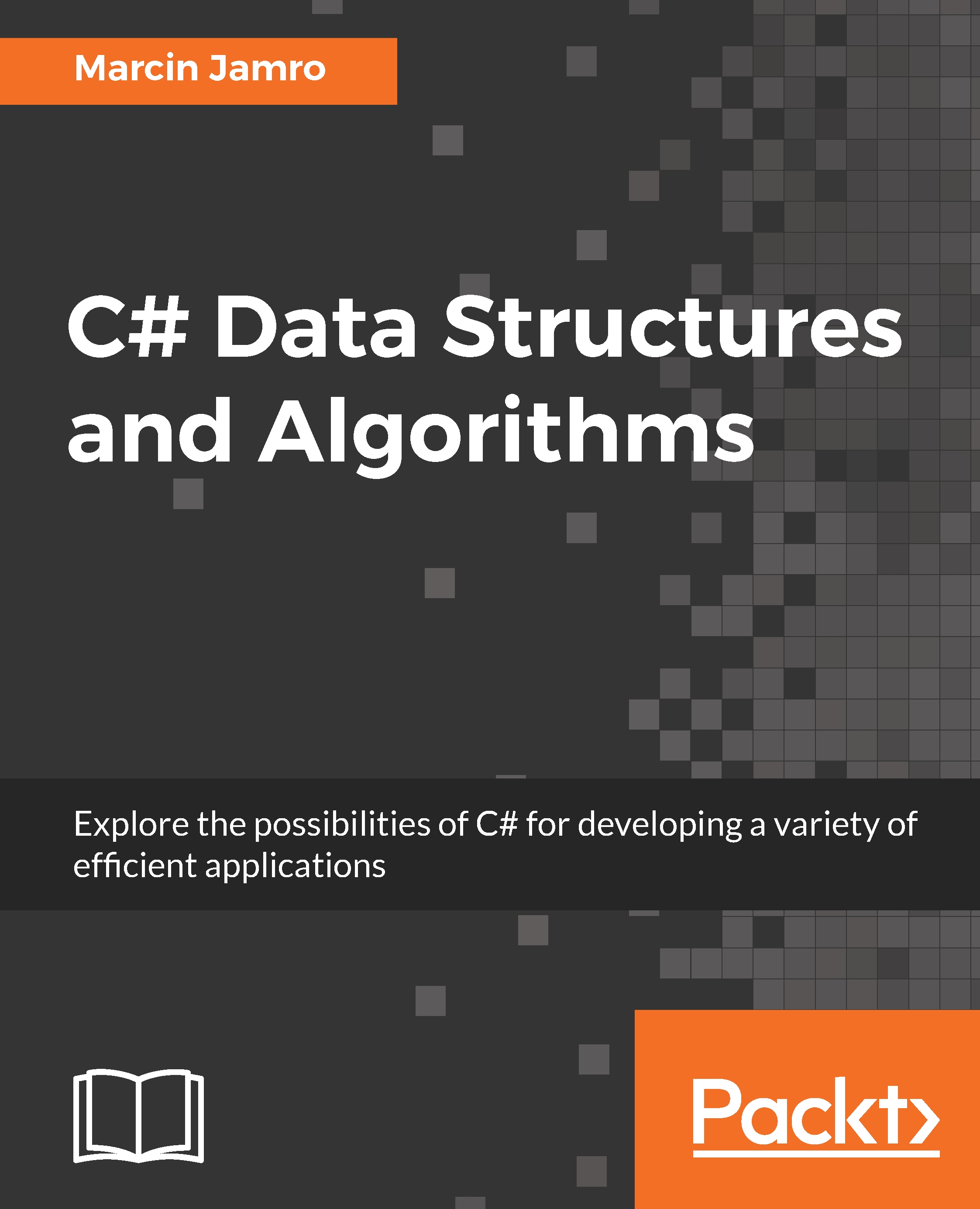In the previous chapters, you have learned about many data structures, starting with simple ones, such as arrays. Now, it is time for you to get to know a significantly more complex group of data structures, namely trees.
At the beginning of this chapter, the basic tree will be presented, together with its implementation in the C# language and some examples showing it in action. Then, the binary tree will be introduced with a detailed description of its implementation and an example of its application. The binary search tree is another tree variant, which is one of the most popular types of trees, used in many algorithms. The following two sections will cover self-balancing trees, namely AVL and red-black trees.
The remaining part of the chapter is dedicated to heaps as tree-based data structures. Three kinds of heaps will be presented: binary, binomial...



